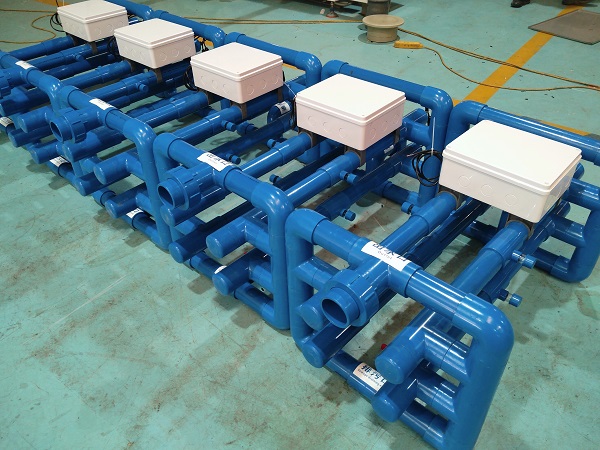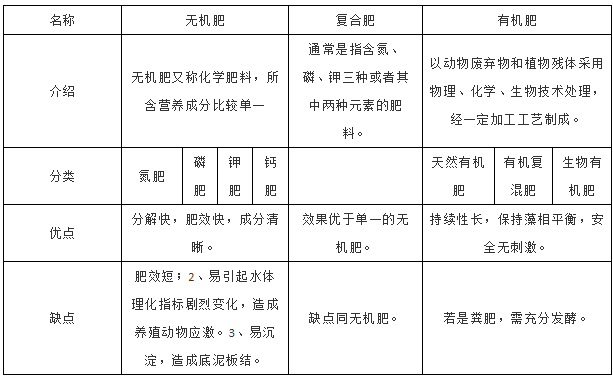Fertilizer water is not a cost, it is the primary productivity of the pond!
As we all know, the benefits of fertilizer water is very much, but every winter and spring, the problem of fertilizer water is always lying in the mind of the majority of farmers, lingering! Today xiaobian will give you a detailed talk about the matter of fat water, to help you remove the haze in the heart!

- The benefits of fatty water
1. To cultivate planktonic algae and provide natural bait to improve the survival rate of seedlings.
2. Promote the establishment of microecological balance in shrimp and crab pond and reduce water temperature fluctuation.
3. Increase dissolved oxygen in water.
4. Improve water quality index, reduce ammonia nitrogen, nitrite, hydrogen sulfide and other toxic and harmful substances.
5. Reduce the impact of weather and climate.
6. Improve the growth rate of shrimp and crab, shorten the breeding cycle.
7. Degradation of heavy metal ion toxicity and reduce organic pollution.
8, inhibit the propagation of moss and other large aquatic plants.
9. Maintain proper transparency after the fertilizer, play a role of shielding, reduce stress and mutual killing.
(Photo: UV sterilizer)
- Common aquaculture water fertilizer does not rise situation and treatment suggestions -
1. The conditions of the pond itself are inadequate
Pond for new pond or pond bottom for sandy soil. Its keep fertilizer storage capacity is poor, fertilizer water is more difficult or water fertilizer rises after meeting in short time "return clear".
Treatment suggestions: for the new pond, it is best to use certain organic fertilizer, for example, as soon as possible to form a silt layer, conducive to fertilizer water. It is more difficult to fertilize water in sandy bottom, high level pond and plastic film pond than soil pond. It is better to provide sufficient nutrients for the growth of algae in aquaculture water.
2. Lack of algae in water sources
The lack of algae species in the water source introduced by the pond makes it impossible to expand algae.
Treatment suggestion: We can introduce some algae-rich water from the surrounding pond, and then carry out fertilizing water operation.
3. Weather
Early water temperature is low, as well as rainy and other unstable weather, insufficient light, algae growth is limited.
Handling suggestions: Generally, it is easy to succeed in fertilizing-water operation when the weather is stable and continuous.
4. Pond water is acidic
The phosphate fertilizer applied is absorbed by acidic soils before phytoplankton can be utilized, resulting in slow phytoplankton growth and difficulty in fertilizing water.
Treatment Suggestion: For acidic aquaculture water, the ph of aquaculture water can be adjusted by using quicklime.
5. Overabundance of zooplankton in water
Zooplankton, such as rotifers, cladophora and copepods, mainly feed on phytoplankton. Excessive zooplankton can easily lead to thin water and difficult water fertility.
Treatment suggestions: 1. Physical method: collect excessive rotifers mechanically, and then fertilize water; 2, chemical method, early in the morning and night along the pool with a sprayer to apply "avermectin", the next day detoxification, then fertilizer water.
Moss on the bottom of the pond
Lichens compete with algae for nutrients in the water, inhibiting the growth of planktonic algae.
Treatment suggestions: There are two kinds of moss in the pond. The first kind is that there is a large number of moss at the bottom of the pond before fertilizer, which can be killed by using plant ash or sodium humate. After death, clumps of yellow moss can be retrieved manually and then refed.
Second, the moss at the bottom of the pond has just started to grow and can be fertilized with the total solution of the moss to inhibit fertilizer.
7. End of mud
The growth of benthic algae, the formation of mud skin, absorption of nutrients in aquaculture water, resulting in difficult water fertility.
Treatment suggestion: The sludge with improved bottom quality should be thoroughly oxidized to the organic matter at the bottom of the pond to prevent the anaerobic respiration from producing gas to drive the sludge to float up. Meanwhile, the sludge on the bottom surface should be oxidized and decomposed before fertilizing water. Avoid the bottom of the pool to receive sunlight, completely solve the growth conditions of benthic algae.
Specific operation steps:
In the morning of the first day, use chemical bottom modification of substrate modifier "potassium bisulfate" for bottom modification. In the place where mud skin is concentrated, dry sprinkling can be added and the effect will be better with an appropriate amount of oxygenating particles.
The next morning, the use of multiple organic acids, fruit acids such as: detoxification guard, detoxification.
The morning of the third day, the total soluble fertilizer column such as: phosphorus too good + algae bacteria polypeptide, fertilizer hydroponic algae.
8. The water is cloudy
Turbidity in water will also lead to difficulties in fertilizer and water, because the turbidity water contains a large number of suspended solids, affecting the transparency of water, resulting in insufficient light for algae in water, thus affecting their growth. At the same time, too much suspended matter will absorb a lot of fertilizer, resulting in the decrease of fertilizer effectiveness and fertilizer water difficulties.
Treatment suggestions: first cause the water turbidity (such as: crucian carp, loach, weather, feeding amount, etc.) to find and deal with, and then fertilizer water.
The pond is leaking badly
Pond leakage is severe, resulting in the loss of fertilizer effect, resulting in fertilizer water difficulties.
Treatment suggestion: choose the pond with no leakage and good water retention performance, or carry out anti-leakage treatment on the bottom of the pond in the breeding gap. After the fertilizer water needs to be timely topdressing, protect the color of the water. According to the principle of a small number of times, during the fertilizer period, the first 10 days, every 4-5 days after a fertilizer, after 20 days every 10 days after a fertilizer. To prevent the growth and reproduction of algae after water depletion of nutrients in the water lack of fertilizer, water color aging.
10. Lack of essential nutrients for algae
When algae in the water lack of limiting nutrients, algae can not carry out normal metabolism, reproduction and growth.
Treatment advice: Pay attention to the comprehensiveness of nutrients provided by fertilizer and water products for algae during fertilizer and water operation, and select fertilizer and water products with comprehensive nutrient elements (especially trace elements, such as "erh yuan") for reasonable combination of fertilizer and water.


- The advantages and disadvantages of various fertilizers and selection methods -


